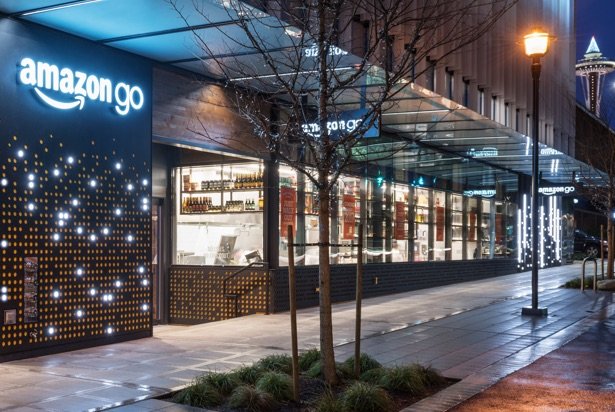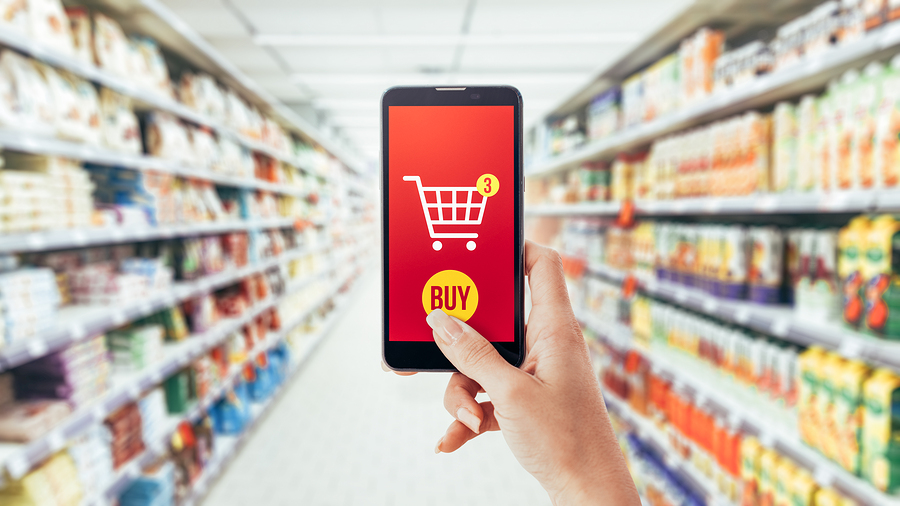
AMAZON GO OPENS TO PUBLIC; RETAIL TRANSFORMATION BEGINS
January 21st, 2018 Posted by Emergent Consumer insight, Culinary lifestyle, food retail strategy, Food Trend, Marketing Strategy, Retail brand building, retail brand relevance, shopper experience, Supermarket strategy 0 comments on “AMAZON GO OPENS TO PUBLIC; RETAIL TRANSFORMATION BEGINS”Emergent announces retail transformation services
After a year in beta test, Amazon today opens its new high tech retail concept – Amazon Go — to the Seattle public. With it a new era in food retail begins, one that we believe will be transformational on more than one level.
Undoubtedly most of the coming media feeding frenzy will be focused on Amazon’s Just Walk Out technology, and the computer vision, deep learning algorithms and sensor fusion capability that sits underneath their no-checkout-line innovation. Importantly though, at Emergent we’re watching closely how the store is designed and curated to reflect consumer preferences for higher quality, fresh products for either immediate consumption or at-home meal execution.
Food retail has followed a familiar formula for decades, built around a focus on packaged food and pantry stocking. This has defined the shopping experience for a generation. Amazon Go at 1,800 of retail square feet is more convenience store than grocery. But the entire platform is edited to optimize and leverage shopper interests:
- Everything matters — and consumer insight informed merchandise selections are critical to match the consumer’s desire for fresh foods and upgraded snack and meal experiences. Carefully edited choice is a good idea.
- An on-premise display kitchen conveys the fresh, culinary inspired fresh preparations people prefer.
- An array of four to five rotating meal kits brings grab-and-go to full meal solutions.
- Integration of Whole Foods 365 store brand products offers its own, embedded quality cachet to packaged shelves.
Elimination of the check-out immediately removes friction from the shopping experience. So, yes, we believe this leap will be greeted warmly by people who have better things to do than stand in line.
The most important shift from our perspective is the product curation itself. Grocery stores ask the consumer to conform to its business model, to serve its supply chain relationships and its legacy shopping format – which is more about stock-ups in an era when consumers increasingly shop smaller baskets looking for just-in-time fresh ingredient meal solutions.
With Amazon Go we now have a food retail concept that religiously follows what the consumer wants in addition to how they want to shop (more convenience). The future of food retail must be centered on consumer relevance rather than just a mirror of routine retail infrastructure and traditions.
So today Emergent also announces our retail transformation services, intended to help food retail bring the consumer to the center of business and strategic planning. At a time when Amazon once again changes the game to secure a greater share of food shopping, Emergent’s transformation services for food retail address improvements to brand mission and go-to-market strategies.
Why does it matter? As Kevin Coupe wrote in his announcement story in his special edition of Morning News Beat, as Don Quixote’s sidekick Sancho Panza opined, “Whether the stone hits the pitcher, or the pitcher hits the stone, it’s going to be bad for the pitcher.”
Amazon is the stone. You already know who the pitcher is.
We’re here to help.
Looking for more food for thought? Subscribe to our blog.
Bob Wheatley is the CEO of Chicago-based Emergent, the healthy living agency. Emergent provides integrated brand strategy, communications and insight solutions to national food, beverage, home and lifestyle companies. Emergent’s unique and proprietary transformation and growth focus helps organizations navigate, engage and leverage consumers’ desire for higher quality, healthier product or service experiences that mirror their desire for higher quality lifestyles. For more information, contact [email protected] and follow on Twitter @BobWheatley.





